Damn, it’s huge. That’s the first thought that strikes us as we free the Samsung Odyssey OLED G9 S49CG950SU from its packaging. A substantial 49 inches (diagonal of 1.24 meters) measures Samsung’s gaming giant, offering as much space as two 27-inch monitors side by side, minus the annoying center bezel. What makes Samsung’s flagship monitor, the OLED G9, better than the Odyssey Neo G9, and where does its predecessor excel?
Samsung Odyssey OLED G9 Review: Quick Setup
The Samsung Odyssey OLED G9 is ready for action in moments. The monitor stand and base can be easily secured using two pre-placed threaded screws. The assembly then connects to the actual screen via a click mechanism, no screwdriver required. While it demands a large desk to accommodate the 49-inch behemoth, compared to its predecessor, the Samsung Neo G9, the OLED G9 takes up much less desk depth.
Technical Specifications of Samsung Odyssey OLED G9
| Specifications | Details |
| Screen Size (Class) | 49 |
| Flat/Curved | Curved |
| Resolution | 5,120 x 1,440 |
| Aspect Ratio | 32:9 |
| Brightness | 250 (Typical), 200 (Min) |
| Contrast Ratio Static | 1,000,000:1 |
| HDR | HDR10+, VESA DisplayHDR True Black 400 |
| Color Support | Max 1B, 99% (DCI Coverage) |
| Panel Type | OLED |
| Frame Rate | Max 240Hz |
| Screen Curvature | 1800R |
| Response Time | 0.03ms (GTG) |
| Features | Windows 10, FreeSync Premium Pro, G-Sync Compatible, Quantum Dot Color, Smart TV (Tizen™ OS), Adaptive Picture, Game Mode, Wireless Dex, Multi View, Alexa Voice Assistant, SmartThings Hub |
| Power | External Adaptor, AC100~240V ~50/60Hz, 220 W (Max Power Consumption) |
| Inputs | HDMI 2.1, USB 3.0 (3 ports), Wireless Display, Display Port 1.4, Micro HDMI 2.1 |
| Audio | Built-in Speakers (5W x 2ch), Adaptive Sound Pro |
| Design | Curved Screen, Tilt (-2° to 15.0°), Height Adjustable Stand, Silver Color (Front/Rear), Wall Mountable (100 x 100) |
| Calibration | Factory Tuning, Standard/Dynamic/Movie/Graphic/Entertain/Eco Color Modes |
| Price | $1299 |
Advantages of the Curved Display
This is mainly due to the thinner screen and less aggressive curvature compared to its predecessor. Instead of opting for a 1000R curve, Samsung compresses the Odyssey OLED G9 to only 1800R. This curvature means the monitor is curved with a radius of 1,800 millimeters, or 1.8 meters. This reduces the distance from the eye to the screen edges, providing a view of the monitor’s content without straining one’s neck. Another advantage of the curved display: gamers can immerse themselves deeper into gameplay, enhancing the intensity of racing games and atmospheric single-player titles like “Hogwarts Legacy” significantly.
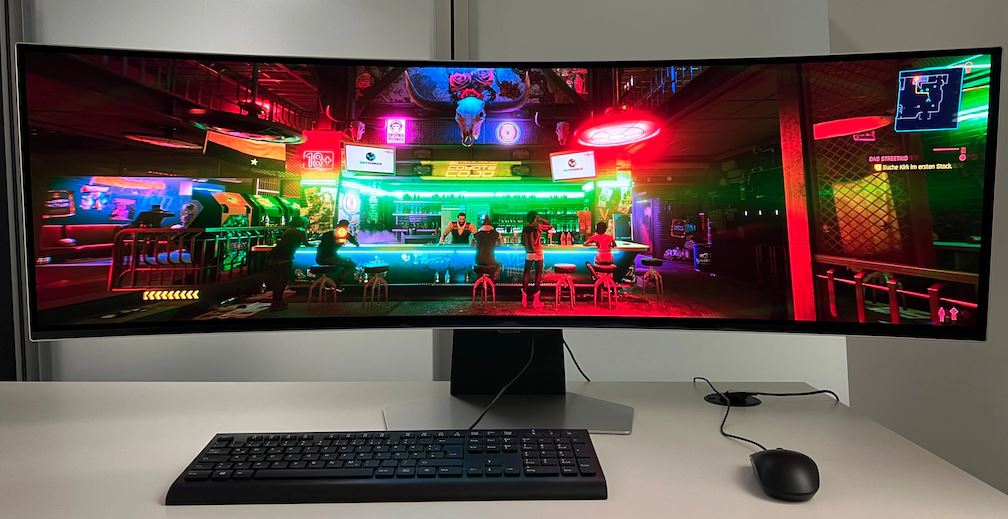
Wider than Wide
Thanks to the ultra-wide aspect ratio of 32:9 (equivalent to two 16:9 monitors), gamers can see more of the environment. In games like “FIFA 23,” almost the entire field can be viewed at once, while racing games like “Forza Horizon 5” or “Dirt Rally 2.0” practically pull players into the virtual world. However, not all titles support the 32:9 format, leaving gamers with black bars on the sides for many games designed for the classic 16:9 aspect ratio.
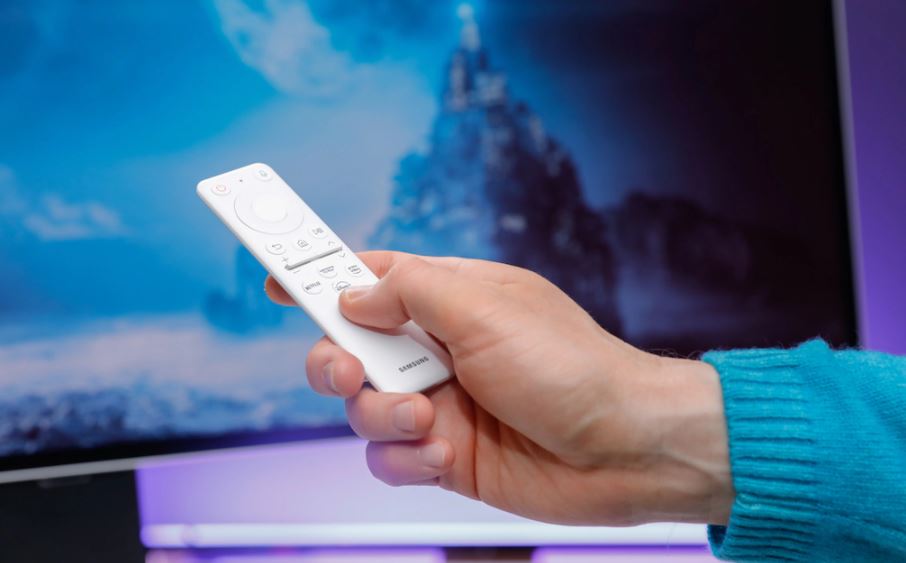
Perfect Black
Irrespective of the aspect ratio, the OLED G9’s display looks stunning. As the name suggests, Samsung employs an OLED panel in the G9, commonly found in modern smart TVs. Compared to conventional LC displays (VA panels in the Neo G9 and G9), OLED technology delivers the deepest blacks and an almost infinite contrast ratio. The secret? Self-emissive pixels. Unlike LCD panels, OLED pixels can switch off entirely, resulting in a more vivid and almost three-dimensional image.
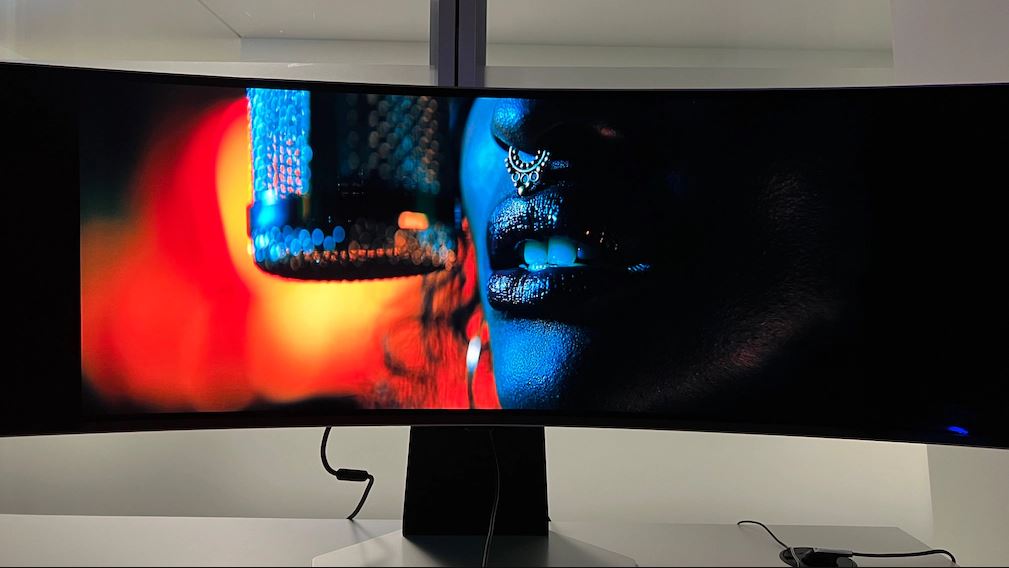
OLED with Quantum Dots
However, the OLED display is just the foundation of Samsung’s high-end monitor. While blue OLEDs initially produce an entirely blue image, red and green pixels utilize quantum dots (hence QD-OLED) as color converters: when blue light hits these nano-crystals, they emit red or green light. In review, Samsung’s QD-OLED technology delivered top-notch image quality. Thanks to its nearly perfect color space coverage, the Samsung Odyssey OLED G9 presents vivid colors, while its high color accuracy of 96.6 percent ensures natural skin tones in movies and series.
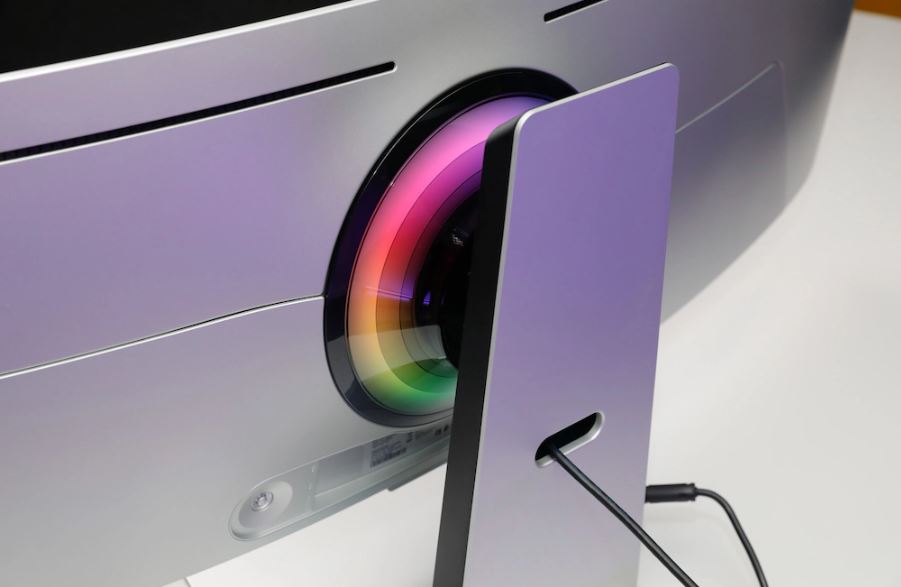
Intentionally Dimmer?
However, Samsung seems to cap the brightness deliberately. The monitor achieved a maximum brightness of 250 nits for SDR content – a relatively modest value for the luminous QD-OLED panel. In HDR, however, smaller areas reached up to 416 nits, with individual highlights shining at 700 nits per square meter. Nevertheless, the OLED G9 falls short of its predecessor’s dazzling peak brightness of 1,035 nits. During review, it was observed that the monitor automatically reduces brightness with large white content, possibly to save power and extend panel lifespan.
The Greatest Risk
Always present with OLED screens: the risk of burn-in. This refers to the permanent imprint of content on the display, remaining visible even after changing the image. The risk arises when displaying unchanging images for extended periods, such as channel logos during TV viewing or status bars in games. However, OLED technology has progressed to minimize this risk. Displaying high-contrast static images for hours on our review unit did not result in burn-in.
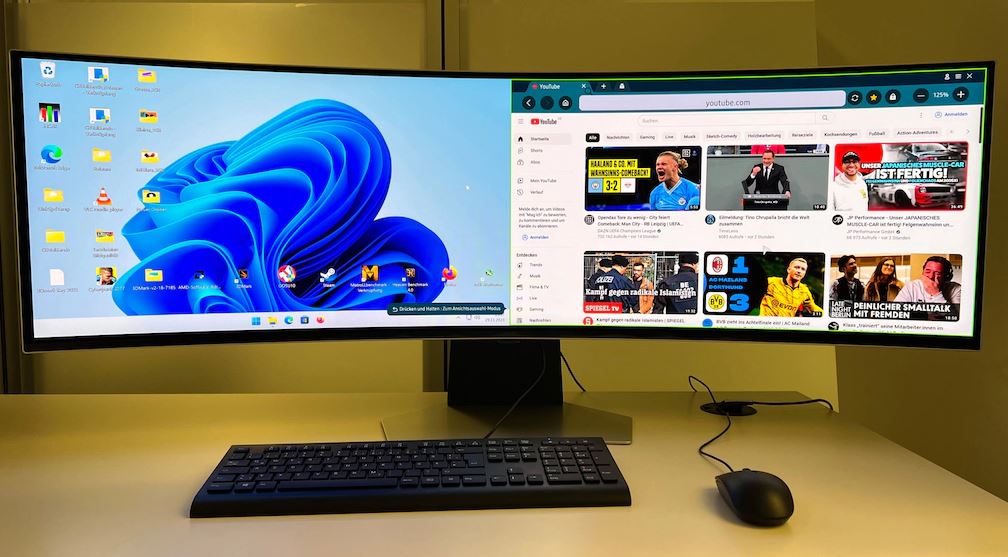
Samsung Odyssey OLED G9 Underdeveloped Gaming Mode
Critical for gamers: achieving the native resolution of 5120×1440 pixels (double WQHD) and the full 240 Hertz requires top-notch hardware. Smooth gaming is possible with an RTX 4070, but to maintain a consistent 240 fps (frames per second) at the highest resolution, the RTX 4090 is preferable. However, the monitor fails to unleash its power in every mode. In the factory-set Eco Mode, it maxes out at 120 Hertz – the Samsung achieves 240 Hertz at maximum resolution only in Gaming Mode, which activates upon connecting a gaming PC or notebook via HDMI or DisplayPort.
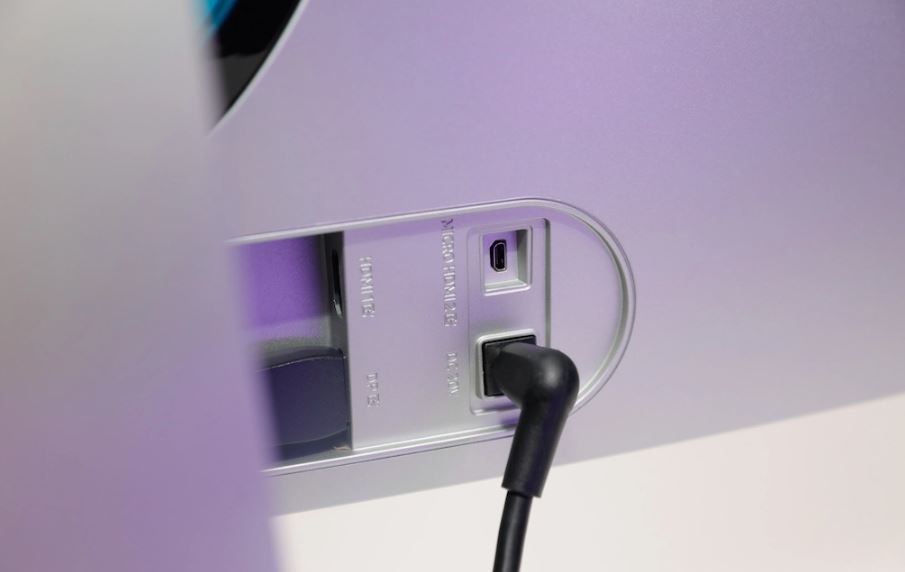
The drawback?
In Gaming Mode, the image appears overly saturated, colors seem unnatural. However, this is most noticeable in desktop operation. In-game, the colors appear less exaggerated. Nevertheless, Samsung loses unnecessary points due to its underdeveloped Gaming Mode – the monitor scored 1.7 in the Eco Mode during review. Gamers prioritizing the best possible image quality or achieving only 120 Hertz with their graphics card are better off gaming in Eco Mode. Alternatively, adjusting the image in Gaming Mode to match the Eco Mode’s impression is possible via “Picture Setup” in “Expert Settings” by turning off “Contrast Enhancement” and setting the color tone to “Warm2”. It’s crucial to keep the “Color Space Settings” on “Auto”.
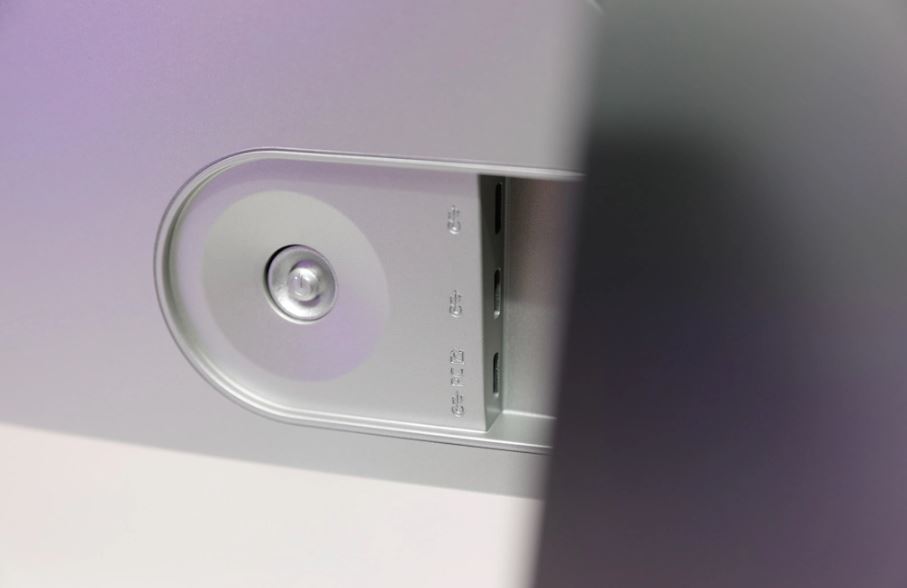
Samsung Odyssey OLED G9 Suitable for Both Camps
By the way, the image mode doesn’t affect the extremely short response time of 2.7 milliseconds. Combined with the high refresh rate, games ran smoothly and seamlessly on the screen during review. While officially equipped with AMD’s FreeSync to counter image tearing, in review, monitor synchronization with GeForce graphics cards was successful.

Not a Great Office PC…
Is this giant monitor suitable for work? With its gigantic screen real estate, arranging five windows in DIN A4 size side by side is effortless. This makes the Samsung Odyssey OLED G9 ideal for multitasking in a home office. But there’s a critical downside to the QD-OLED panel – its pixel structure. Being triangular, it can cause color fringes when displaying straight edges, especially noticeable with text in Word or Excel. Those heavily using their gaming monitor for word processing or browsing may be better off with the Corsair Xeneon Flex with a classic WOLED panel or the previous Odyssey Neo G9 with VA technology. However, typical of OLEDs, Samsung’s viewing angles are excellent, ensuring colors and contrasts remain consistent even when viewing the monitor from an angle.
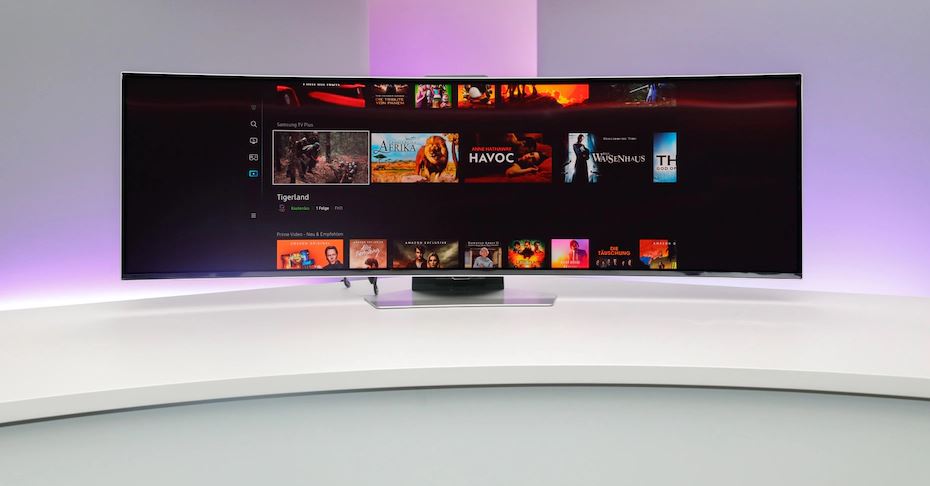
…But an Excellent Smart TV
The OLED G9 offers more than just gaming. It can operate entirely without a PC or laptop, doubling as a full-fledged smart TV with Wi-Fi, Bluetooth, and all major streaming apps. Cloud gaming is also supported. Emphasizing its TV lineage, Samsung includes a remote similar to those bundled with its TVs. Alternatively, navigation through the menu can be done using the joystick on the back. Like its smart TVs, Samsung employs its proprietary Tizen operating system. However, the sometimes-convoluted menus might prove bothersome. Surprisingly, the integrated speakers deliver rich sound during review, maintaining quality even at higher volumes. The price tag for this monster monitor is hefty, with Samsung asking for a substantial $1299 at the time of review.
Review Conclusion Samsung Odyssey OLED G9 S49CG950SU
With its 49-inch diagonal and a 240 Hertz refresh rate, the Samsung Odyssey G9 S49CG950SU is a force of nature. The gaming monitor excelled in the review, especially due to its OLED display. The technology delivers perfect contrasts, stable viewing angles, and extremely short response times. Unfortunately, in the crucial gaming mode, the otherwise excellent image quality diminishes slightly, preventing a higher rating.
Pros and Cons of Samsung Odyssey OLED G9
Pros
- Perfect black thanks to OLED display
- Very high refresh rate
- Smart TV features
- Huge 49-inch diagonal
Cons
- Cumbersome menu navigation
- Requires strong hardware
- Expensive
Samsung Odyssey OLED G9 Final Verdict
With its 49-inch diagonal and a 240 Hertz refresh rate, the Samsung Odyssey G9 S49CG950SU is a force of nature. The gaming monitor excelled in the review, especially due to its OLED display. The technology delivers perfect contrasts, stable viewing angles, and extremely short response times. Unfortunately, in the crucial gaming mode, the otherwise excellent image quality diminishes slightly, preventing a higher rating.





